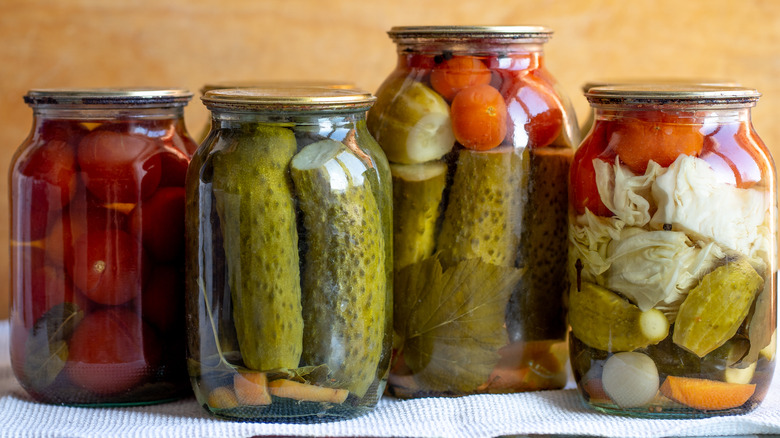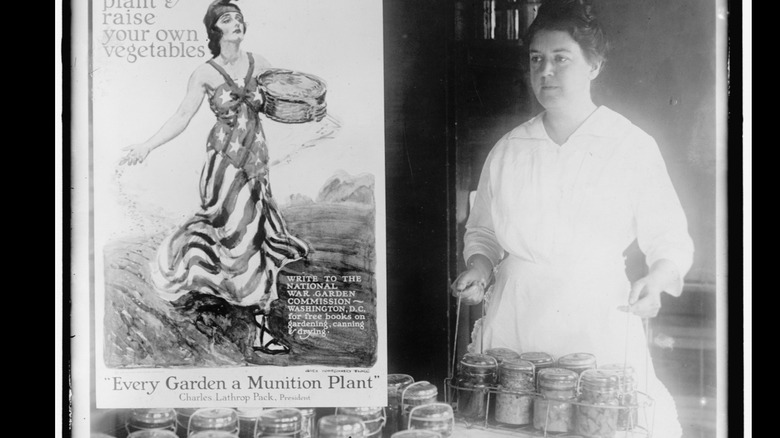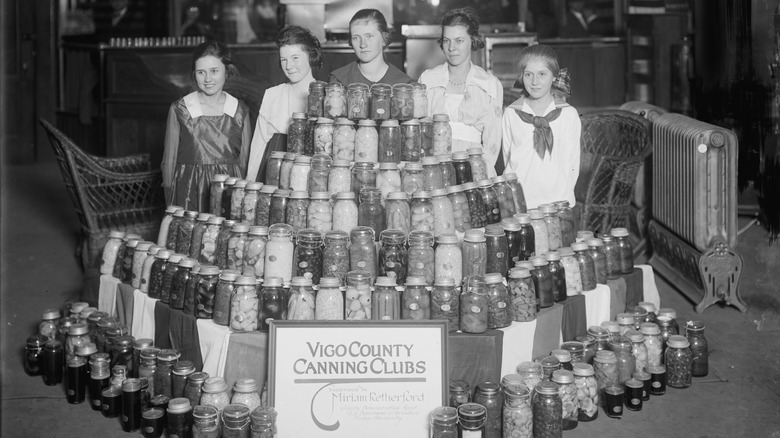The Agents Who Taught Home Canning Skills During The World Wars
What if true patriotism was found in the kitchen? A purple heart to the home cook who sustains a stove burn and a promotion to general for the dish boy. Maybe not quite, but canning played a huge role in patriotism during World War I and World War II. Women became agents of culinary war and were commissioned to do home demonstrations. War gardens were the red, white, and blue of the soil. According to the National Agriculture Library, food preservation was a "patriotic venture."
Early in World War I, British and American civilians were encouraged to grow "war gardens" or "victory gardens" (via NPR). The purpose of encouraging gardening was to reduce the reliance on food rationing. Artists were also called upon to create posters raising awareness and selling the idea of "sowing seeds of victory," according to the State Historical Society of North Dakota. In North Carolina, 1,000 people attended a 1917 convention on farming, where the government pushed food production for the armies and allies while encouraging civilians to grow their own (via NC State). Purchasing food was discouraged because most production went to war efforts.
Civilians were encouraged to grow their own food
As the war went on, the focus on growing your own food moved to the long-term preservation of goods. More artful posters were commissioned with catchy slogans like "Turn Your Preserves into Reserves" and "Can All You Can." According to the State Historical Society of North Dakota, the National War Garden Commission gave prizes to the "best display of canned vegetables from a war garden" at state fairs around the nation. Encouraging home canning also relieved pressure from the large canning factories focusing their operations on war efforts, explains NPR.
According to The Food Historian, home canning was not common at the time, particularly safe home canning, so the government decided to spread the knowledge of canning through home demonstrations. Home demonstrations, also known as home demonstration clubs, began in 1914 to "expertly” instruct women on home economics and agriculture, reports Montana Women's History. The federal government employed "agents" (women at home) to cooperate with the United State Department of Agriculture. The agents were divided into three groups — the agricultural agent, the home demonstration agent, and the 4-H club agent.
Women were hired to demonstrate canning
Community meetings, in-home demonstrations, and clubs popped up around the nation for women, youth, and families led by the home demonstration agent to teach safe canning methods. At the end of World War II, home demonstration clubs expanded, eventually becoming a place for women to socialize and young mothers to learn "scientific" parenting and home skills. Unsurprisingly, these clubs primarily focused more on the "rural woman," continues Montana Women's History.
A 1951 booklet from the USDA states that the objective of the home demonstrator is as follows: "To give to rural people, in a form in which they can use it at a time when they need it, information that will enable them to become better citizens in a democracy." But with the rise of agribusiness came the rise of mechanical farming, and by the '60s, the home demonstrators fell out of popularity.
Could the home demonstrators of the world wars now be referred to as "agents of change"? These agents played the most significant role in spreading home canning across the country throughout World War I and later in World War II. Today, home canning is not only common but a topic of growing interest because of the shift towards health-focused and environmentally-friendly foods, says NPR. And while the government isn't employing demonstrators anymore, canning at home is experiencing a resurgence with newfound meaning.


